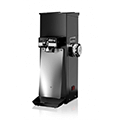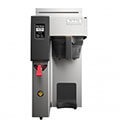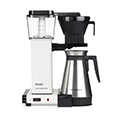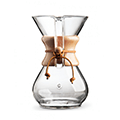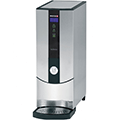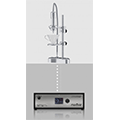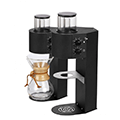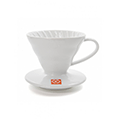The espresso machine may be the centerpiece of most specialty coffee shops, but for true coffee connoisseurs, it’s the filter coffee that separates the very best cafes from all of the rest. A well-made pour over might be the best way to enjoy the subtly different flavors of single origin coffees — but at the same time, nothing beats a cup of batch brew for convenience and speed.
القهوة المعدة جيداً بطريقة السكب اليدوي قد تكون أفضل سبيل للاستمتاع بنكهات متعددة وبالغة الوضوح من القهوة أحادية المنشأ.
<strong>A well-made pour over might be the best way to enjoy the subtly different flavors of single origin coffees —</strong> but at the same time, nothing beats a cup of batch brew for convenience and speed.
If you want to offer filter coffee, then it’s worth paying just as much attention to the equipment you choose as you do to the espresso machine. Customers who drink filter coffee are less likely to add sugar and milk, so there’s nowhere to hide if the brew is anything less than perfect. Getting the right equipment will make it much easier to achieve good results every time.
The Grinder
Of all the equipment you use in brewing filter coffee, the grinder is by far the most important. When choosing a filter coffee grinder, there are three main features to look for: large burrs; low retention; and the ability to easily make tiny adjustments to the grind size.
The size of the burrs is the biggest factor affecting the grind quality.
Simply put, large burrs make for tastier brews. Large burrs also grind more quickly, which becomes important when you’re grinding entire bags of coffee for your customers to take home.
Retention is the amount of ground coffee that stays in the grinder after use. This coffee rapidly goes stale and has to be purged out of the grinder by grinding through a bit of fresh coffee in between each brew. The less coffee you have to purge out, the less coffee you waste. The very best grinders hold less than half a gram of ground coffee in between doses, which means you can purge the grinder with just three or four beans.
Finally, the grind size adjustment will determine how easy it is to dial in. Many filter grinders use fixed steps or notches in the grind adjustment, which means it’s impossible to make small changes. The best grinders are stepless, and easy to adjust. Being able to easily make small changes helps you to get the best possible flavor from your brew.
The best grinder for filter coffee is the EK43 from Mahlkönig. This grinder is widely recognized as one of the best in the business for flavor.

It has huge 98 mm burrs, and the grind size adjustment is very precise. It also retains less than 0.5 grams of coffee in between brews, thanks to the vertically mounted burrs. Best of all, it can also be used for your guest espressos and decaf, which helps to offset the cost of your investment.
Another good option, especially for cafes that sell a lot of coffee beans, is the Ditting KR 804. Ditting grinders are also well-known for their grind quality and can produce amazing coffee. The main disadvantages to this grinder are that it retains slightly more ground coffee than the EK43, and that the design makes it harder to make small, precise changes to grind size. Where the Ditting shines, however, is grinding whole bags of coffee for customers. This is made easy by the bag shaker mounted on the front, which helps the ground coffee to settle neatly into the bag.
Batch brew or pour over?
For a long time, batch brewers were associated with terrible coffee, of the sort found in gas stations and conference centers. However, with care and attention, and the right equipment, a batch-brewed coffee can be every bit as delicious as a manual pour-over.
Batch brewers take very little labor to operate, and allow you to have coffee ready to serve at a moment’s notice — ideal for fast-service cafes. Brewing coffee with a batch brewer is very easy indeed — but the initial process of setting it up and dialing it in can be more complex than it seems.
The best batch brewers allow the barista to change every parameter in the recipe, from the brew time to the number of pulses of water the brewer delivers. Setting the recipe is a job for a professional barista who knows the equipment well. Once the brewer is set up, though, the brewing is very simple, and baristas only need to make small changes to the grind size to keep the brews tasting their best.
The most common pitfalls with batch brew — and the reason that gas station coffee tastes so bad — are keeping the coffee fresh and keeping the equipment clean. Cleaning batch brewers and vacuum pots is very simple, but is overlooked surprisingly often.
Vacuum flasks can keep coffee hot for hours — but the flavor of the coffee begins to deteriorate after just 30 minutes. We would recommend aiming to store coffee in a vacuum flask for no longer than an hour. The implication of this is that to serve great batch brew, you need to be willing to throw coffee away if it gets too old.
Brewing by hand is one of the most rarefied experiences you can offer your customer. A manual brewing method highlights the craft of the barista, and the care and skill put into each coffee.
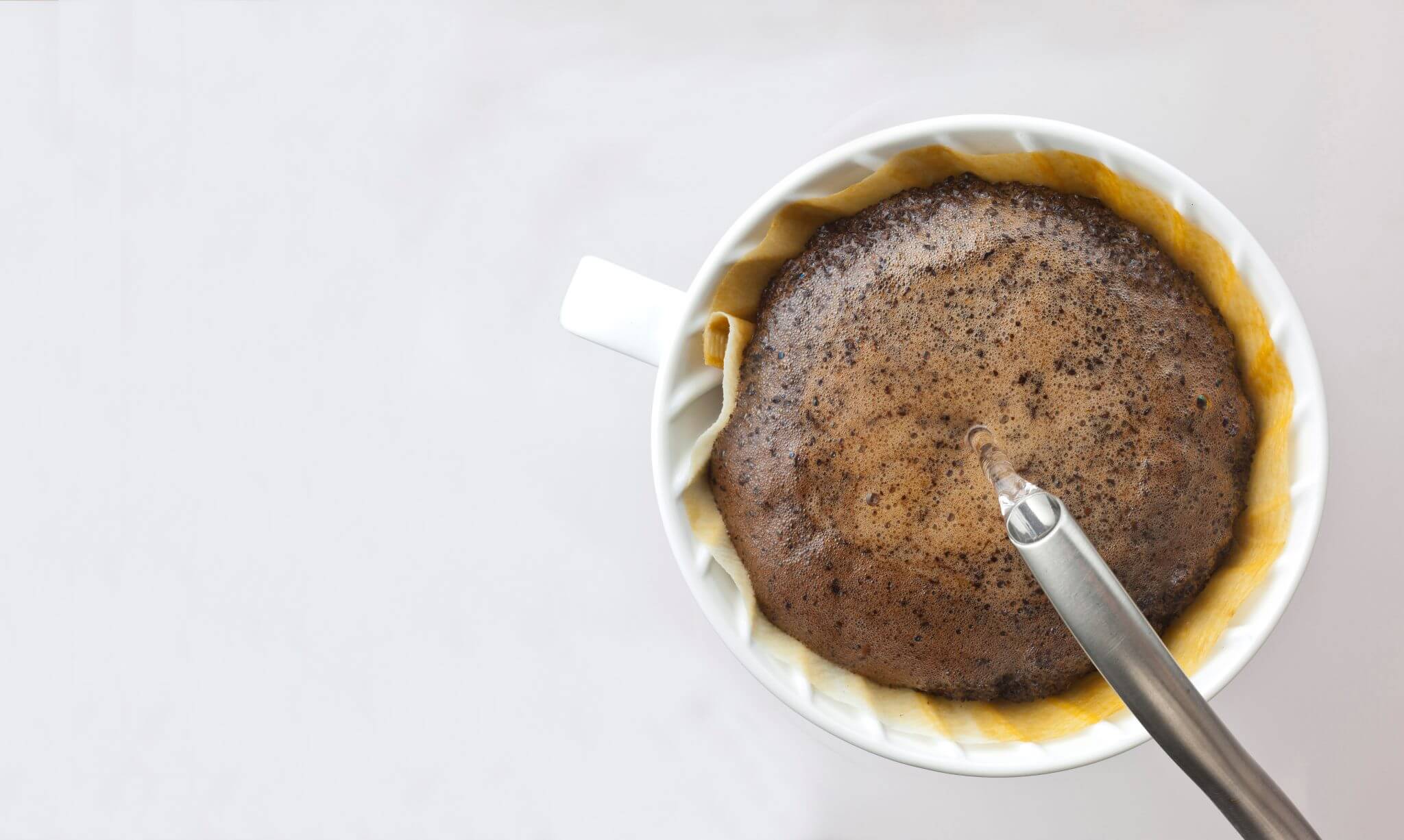
Brewing coffee to order eliminates the problems of freshness, and allows you to offer an almost unlimited range of different coffees if you so choose. It is, however, the slowest way of making coffee, which adds a lot to the labor cost.
Brewing consistently by hand takes some skill and training, and no human is as consistent as a machine. For these reasons, hand brewing is best kept for those customers who want to explore the unique flavors of rare single-origin coffees, and are willing to pay accordingly.
The best batch brewer
If you decide to offer batch brew, then it’s important to choose the right machine for the job.
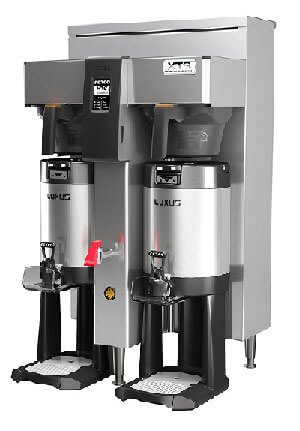
For a specialty cafe, it’s best to use a small brewer, so that the coffee you serve can be fresh without having to throw too much away. Large brewers often offer the ability to make half batches, but this rarely works as well as using a brewer designed for a smaller batch. For most cafes ,a two to three-liter capacity is more than enough: buy several flasks if you need to brew more coffee, and leave the six-liter brewers to the gas stations.
It’s also best to avoid the models with hot plates built in. Heating the coffee destroys the flavor very quickly. Hot plates can usually be turned off, but brewers with hot plates aren’t always compatible with vacuum flasks, which means the coffee will quickly go cold.
من الأفضل أيضاً أن تجتنب النماذج التي تحتوي على أقراص تسخين مدمجة إذ أن تسخين القهوة يفسد نكهاتها بشكل سريع. يمكن عادةً إطفاء أقراص التسخين ولكن أجهزة الاستخلاص المحتوية على هذه الألواح لا تكون عادةً ملائمة للأباريق العازلة للحرارة، مما يعني أن القهوة ستبرد بسرعة.
Our pick for the best batch brewer is the Fetco CBS-2131XTS . This machine can brew two or three-liter batches, and the brew recipe can be customized to your heart’s content via the built-in touchscreen.
Serious coffee geeks may also want to fit the Litmus spray head , an attachment that sprays the water more evenly over the bed of coffee.
For smaller cafes, however, a good option to consider is the Moccamaster . This iconic machine is very simple to use, and brews into 1.25-litre flasks, which minimizes the amount of coffee you’ll have to waste.
The best hand brewer
For brewing by hand the choice of brewer is a matter of personal taste: many baristas swear by the Hario V60, while others prefer the classic design of the Chemex.
Whatever brewing method you choose, you’ll need a dedicated water boiler such as the Marco Ecosmart PB10 . Don’t be tempted to use hot water from the tap fitted to your espresso machine or batch brewer — these are not designed to produce large quantities of water.
For cafes that plan to serve a lot of hand brews, the Modbar pour-over unit is the perfect choice.
This sleek machine provides an instant supply of hot water to a nozzle designed for brewing by hand. The undercounter design means that there is no barrier between the customer and the barista, allowing them to see all of the skill that goes into making their coffee.
The best of both worlds
Batch brewers and hand brewing have their pros and cons, and both have a place in specialty coffee shops. Which method is best for your cafe depends on the experience you want to offer, and indeed many cafes offer both.
Batch brew is ideal for customers who value consistency and convenience, while hand brew suits customers that want to experience more exclusive coffees — and are willing to pay for it.
There is one option, however, that offers the convenience of automation, whilst still allowing cafes to serve freshly-brewed coffees: the SP9 from Marco. The SP9 is an automated pour-over brewer, with a very neat undercounter design that will fit into any coffee bar. This machine can be set up to automatically brew manual methods like the V60 and Chemex — taking out a lot of the time and labor cost involved in brewing a coffee.
The SP9 is the ideal choice for cafes that want to offer a range of single origin coffees, but don’t want their baristas to spend five minutes or more standing over each brew.
Still searching for The One?
Contact our team for a free personalized consultation,
and we will help you find what you’re looking for.


